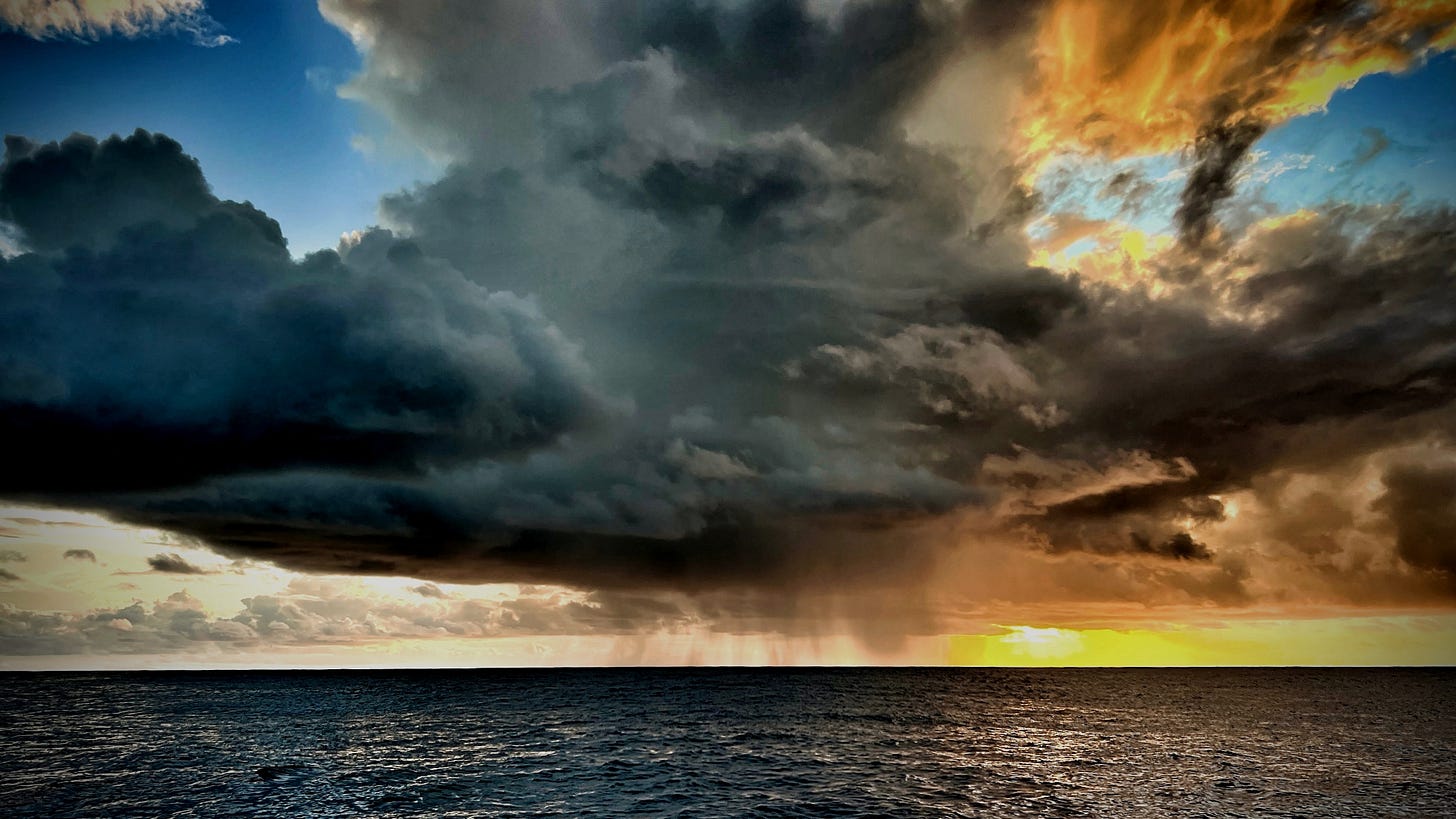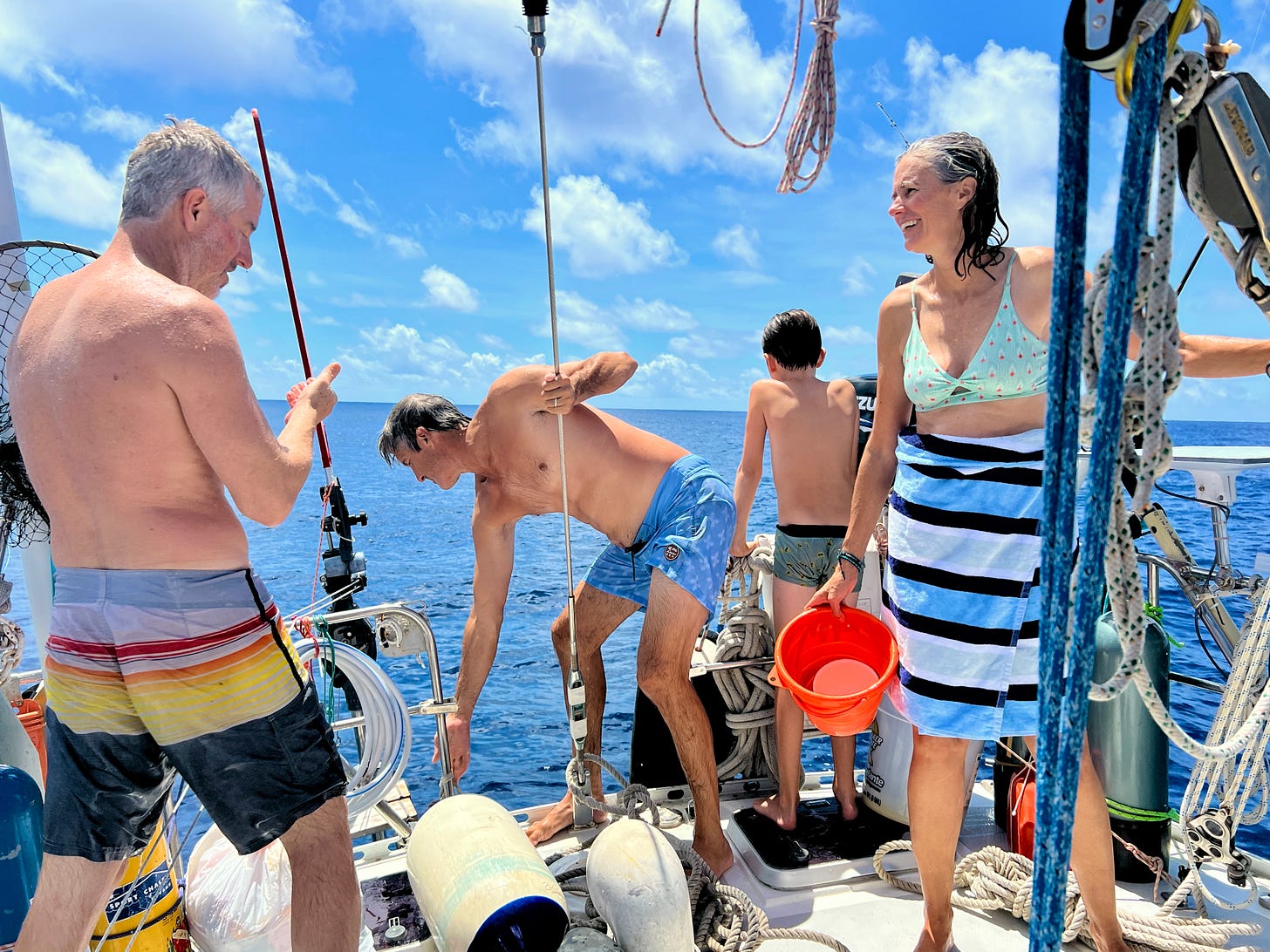Sailing Across an Ocean Wilderness
Part Four: Understanding our climate system will take you a long way.
" This is why I have chosen to become an explorer. Sailing across a vast ocean gives one the luxury of time to think, contemplate and reflect. There is no choice but to accept the natural elements daily and at the end of a long voyage, or expedition, there is a deep and profound sense of satisfaction and a newfound perspective of our natural world." David Thoreson
When I left you all hanging in Part Three, Polar Sun was north of the Equator and nearing the "doldrums" of the Pacific Ocean. In Part Four, let’s do a little recap, and primer, on the thought process and execution of a 3000-mile ocean crossing.

The reason Polar Sun was sailed down the west coast of the US and into Mexico, near Puerto Vallarta, was because reliable northwest winds will deliver a boat south to a coastal destination. From there, heading west out into the Pacific Ocean you pick up the northeasterly trade winds that can carry you all the way across the ocean to the Philippines, if that is your destination in the northern hemisphere. If you are crossing the equator into the southern hemisphere however, you must sail south into a large, hot pocket of unstable air to pick up the southeast trade winds. This presents a greater challenge.

There is a reason why the term "trade winds" exists. Before fossil-fueled engines, sailors with cargo began crossing the seas, discovering the most efficient "highways" of the oceans in the process, and established international trade as we know it today. There is a natural, and predictable flow of air and water circulating throughout our entire planet. These currents change from season to season and all this information has been published into volumes of sailing directions that can now help us small boat sailors roam the planet at will.
Our sailing directions required us to sail across the equator to arrive in the French Marquesas Islands, the gateway to all of French Polynesia, and the dreamy tropical islands beyond. Sailors dread the "doldrums," or what is properly called the Intertropical Convergence Zone (ITCZ). Sailing through this area requires a plan, and a little luck, to safely come through to the other side. It's kind of like the Star Trek's "Enterprise" slowly moving through a nebula, probing, slowly moving forward to escape into a new world, in our case, the Southern Hemisphere.
The ITCZ encompasses a volatile area of unstable air on both sides of the equator. This region circling the globe is integral to maintaining a stable climate system on earth. It is a crucial weather-making region where the heated air from the two hemispheres meets, and is then forced upwards into the atmosphere to recirculate towards both poles forming a semicircular pattern of heating and cooling. Clockwise in the Northern Hemisphere, counter in the south.

Along with ocean currents circulating warm and cold water, this is our natural heating, and air conditioning system, which provides the stability for all life to exist on Planet Earth. Man-made climate change is disrupting these natural forces, bringing chaos to a system which has been very stable for hundreds of thousands of years.
We entered the ITCZ after sailing 1700 miles west and then bending our route to the south in what we determined to be the narrowest band of the ITCZ at about 250 miles. We would have to use our engine, sail when we could, be ready for squalls, wind, waves, heavy rain and lightning. We had a little of these elements, but nothing we couldn't overcome and the heavy rain was just a good opportunity to take a fresh shower, something none of us had had in almost two weeks.
Journal Entry, April 25th. Nearing the Convergence Zone.
"0130 hours. Just had a fantastic freshwater shower thanks to a squall and then very heavy rain. MJ ran with the shampoo bottle first and then we all followed. We were laughing and giggling like little school children. This was my first shower since I left Minneapolis 13 days ago."

On Tuesday, April 29th at 0653 hours, we crossed the equator on a beautiful early morning and promised we would have a little celebration later in the day. Polar Sun was moving slowly in light wind sailing south and slightly west searching for the start of the southeast trade winds. In the afternoon the wind completely died. We decided it was time for a swim in the ocean and the celebration of our equator crossing.

There is a time-honored tradition amongst sailors called "crossing the line" where those who have previously sailed over the equator called "Shellbacks," welcome the newbies called "Polliwogs," into the club of the experienced seafarers. This is all a fun and silly ode to King Neptune, the Greek God of the Sea, and creates a feeling of comradery amongst the crew, especially during a hard voyage. As a four-time Shellback, I was honored to welcome the four new Polliwogs into the club. We toasted with a shot of tequila, threw one over for King Neptune and were soon underway again.

The crew of Polar Sun struggled in the heat and light air, not wanting to use more fuel. It's a precious commodity and needed to be used sparingly. We suffered through a couple long, stifling days sometimes sailing, and then motoring slowly through the night.
And then, just like magic, the SE trade winds picked up and we were off to the races heading for the Marquesas Islands. The sailing was spectacular, the best of the voyage. The wind came around aft of our beam (behind us) and this allowed for the use our big, colorful spinnaker we called the "Womper." This is our fastest point of sail and our angle towards the islands was now favoring a landfall on the southern and eastern island of Hiva Oa. The excitement was hard to contain.

On Saturday, May 4th, at 1700 hours (5 PM), MJ was on watch and shouted a very loud, "Land Ho!" We were about 30 miles away but could clearly see the outline of the mountainous island of Hiva Oa. Tommy was so excited that he went kind of bonkers. It was hilarious. The only bummer was a night arrival which is very dangerous in foreign, unknown waters. The bright spot was a magical moon and silhouette of the spectacular, mountainous terrain. Oh, and did I mention the smell? As we rounded the point of the island in the light wind, the seas calmed, and the fragrant scent of flowers was overpowering. We had arrived in French Polynesia.
Journal Entry- Sunday, May 5th. Anchored at Hiva Oa.
At 0015 Hours, with MJ and I on the bow, we dropped anchor, and our Pacific Ocean crossing was officially completed. After another hour of checking the anchor and cleaning up messes on the deck, we met in the cockpit high fiving, busting knuckles and hugging in celebration of a successful completion to the voyage. Mark, MJ and I shared some libations, told many stories and finally hit our sweltering, sticky bunks for a short, fitful, but happy sleep.
The morning came quickly. I popped my head up. It seemed we had arrived on another planet. We had some coffee, put the dinghy in and went ashore. The dock and gravel road seemed to be moving. I was disoriented and felt like a drunken sailor, but it felt oh so great to walk again. The view from the inner harbor was fantastic and surreal. Maybe we had just stumbled into paradise. Only time would tell...

Have you explored the variety of writers in the Iowa Writers’ Collaborative? We are writers and creators from around the state and contribute commentary and feature stories of interest to those who care about Iowa. Please consider a paid subscription.



